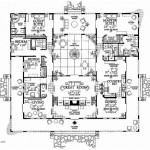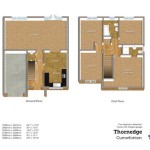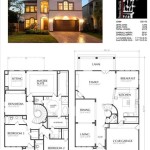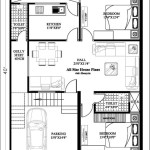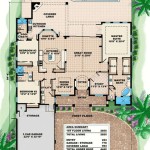Cob House Plans for Small Dwellings: A Comprehensive Guide
Cob construction, an ancient building technique utilizing a mixture of clay, sand, straw, and water, offers a sustainable and aesthetically pleasing alternative to conventional building methods. The appeal of cob lies in its affordability, environmental friendliness, and the freedom it allows for organic, sculptural designs. This article focuses on cob house plans specifically tailored for small dwellings, exploring the key considerations, design principles, and practical aspects of constructing a compact cob home.
The increasing interest in tiny homes and sustainable living has fueled the demand for smaller cob structures. These dwellings provide a reduced environmental footprint, require fewer resources to build, and offer a simplified lifestyle. Effective planning is crucial to maximize the functionality and livability of a small cob house. This involves careful consideration of space allocation, building regulations, material sourcing, and construction techniques.
Key Point 1: Understanding the Principles of Cob Construction
Before embarking on a cob house project, a thorough understanding of the fundamental principles governing cob construction is essential. Cob walls are typically thick, providing excellent thermal mass, which helps regulate indoor temperature. The thickness of the walls also contributes to the structural stability of the building. However, this thickness requires careful consideration in the design phase, especially when planning a small space. The design must account for the wall thickness to optimize the usable interior area.
The composition of the cob mix is crucial for its durability and structural integrity. A balanced mixture of clay, sand, and straw is necessary. Too much clay can cause excessive shrinkage and cracking, while too much sand can weaken the cob's bond. Straw acts as a binder and provides tensile strength, preventing the cob from crumbling. The ideal ratio varies depending on the specific properties of the clay and sand available locally. Soil testing is recommended to determine the optimal mix for a particular location.
Foundations are paramount for any building, and cob structures are no exception. A robust foundation is necessary to support the weight of the thick cob walls and prevent moisture from rising into the walls. Common foundation options for cob houses include rubble trench foundations, reinforced concrete stem walls, and earthbag foundations. The choice depends on the site conditions, budget, and desired level of insulation. Regardless of the type chosen, the foundation must extend above the ground level to protect the cob walls from splashback and potential water damage.
Roofing is another critical aspect. The roof should be designed to effectively shed water away from the cob walls to prevent erosion and structural damage. Overhanging eaves are highly recommended to provide additional protection. Roofing materials such as metal, wood shingles, or even a living roof can be used, depending on aesthetic preferences and budget constraints. Careful detailing around roof-to-wall connections is essential to prevent water infiltration.
Key Point 2: Designing Functional Small Cob House Plans
Designing a functional small cob house requires careful space planning and consideration of the occupants' needs. Multipurpose spaces are key to maximizing the use of limited square footage. For example, a living area can double as a dining space or a guest bedroom. Loft spaces can provide additional sleeping or storage areas, utilizing vertical space effectively.
Open floor plans create a sense of spaciousness in small dwellings. Minimizing interior walls allows natural light to penetrate further into the building, making it feel brighter and more inviting. Strategic placement of windows and skylights can further enhance natural lighting and ventilation. Window size and orientation should be carefully considered to optimize solar gain in colder climates and minimize overheating in warmer climates.
Built-in furniture and storage solutions are ideal for small cob houses. Built-in shelves, benches, and cabinets maximize storage space and minimize clutter. These can be integrated into the cob walls during construction, creating seamless and aesthetically pleasing features. Platform beds with storage underneath are another effective way to utilize space efficiently.
The layout of the kitchen and bathroom should be carefully planned to ensure functionality and convenience. Compact kitchen appliances and fixtures can save space. Consider using a composting toilet to reduce water consumption and waste. Outdoor spaces, such as decks or patios, can extend the living area and provide additional space for relaxation and entertainment.
Key Point 3: Practical Considerations for Building a Small Cob House
Building a cob house is a labor-intensive process, but it can be a rewarding experience. It’s important to obtain all necessary building permits and comply with local building codes. Regulations regarding cob construction vary depending on the location, so it's essential to research and understand the requirements in your area. Some jurisdictions may require engineering certifications or inspections to ensure the structural integrity of the building.
Sourcing local materials is crucial for reducing the environmental impact and cost of the project. Clay, sand, and straw are typically readily available in most areas. However, it's important to ensure that these materials are of suitable quality for cob construction. Soil testing can help determine the suitability of locally sourced clay and sand.
Cob construction is best suited for climates with moderate rainfall and temperatures. In areas with heavy rainfall, additional protection measures, such as wider eaves and drainage systems, are necessary to prevent erosion of the cob walls. In extreme climates, insulation may be required to improve thermal performance. Natural insulation materials, such as straw bales, sheep's wool, or cellulose, can be incorporated into the walls or roof to provide additional insulation.
The construction process typically involves mixing the cob by hand or with a mechanical mixer. The cob is then applied to the walls in layers, typically 6-12 inches thick. Each layer is allowed to dry before the next layer is applied. This process can take several months, depending on the size of the house and the weather conditions. It’s important to protect the cob walls from rain during the drying process.
Once the walls are complete, they need to be plastered to protect them from the elements and provide a smooth, finished surface. Natural plasters, such as clay plaster or lime plaster, are commonly used. These plasters are breathable, allowing moisture to escape from the walls, which helps prevent mold and mildew growth.
Learning from experienced cob builders is highly recommended. Workshops and hands-on training courses can provide valuable knowledge and skills. Participating in a cob building project can also provide practical experience and insights. Collaboration with experienced builders can help avoid common mistakes and ensure the success of the project.
The finished cob house should be properly maintained to ensure its longevity. Regular inspections should be conducted to identify and address any potential problems, such as cracks or water damage. Minor repairs can be made using cob or plaster. It’s important to keep vegetation away from the walls to prevent moisture from being trapped against the cob. With proper care and maintenance, a small cob house can provide a durable, sustainable, and aesthetically pleasing living space for many years to come.

Cob House Plan Inspiration Kerpiç Ev Tasarım Evler

Cob House Floor Plans For The Home

English Earthbag Cottage Plan Cob House Plans Round

Tiny Cob House Plans The Freeman This

Tiny Cob House Plans The Freeman This

Cob House Plans Natural Building Designs This

Seismic Engineering Diagram Cob House Plans Eco Design

Solar Oval One Plan

Cob Houses Design For Me

Stunning Mud And Wood Architecture

